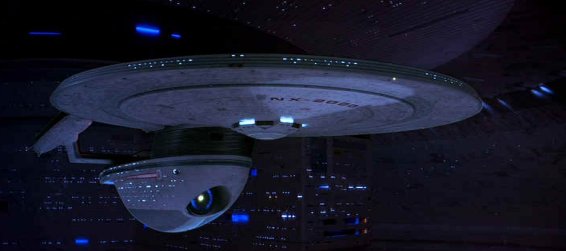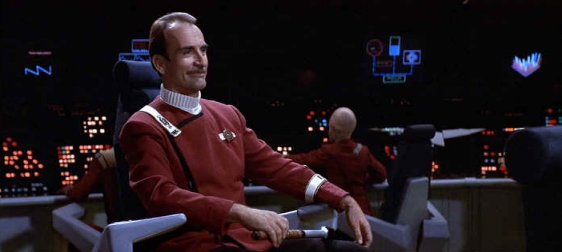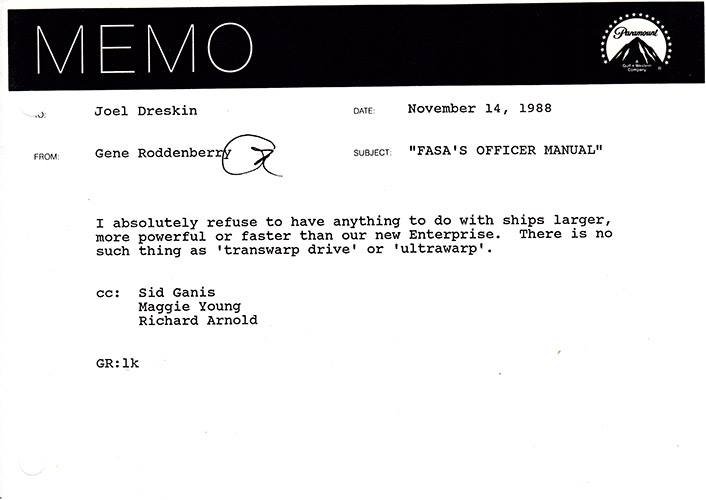| Registry Number | Starship Name | Notes |
| 2000 | Excelsior | Prototype. The Excelsior was retired to the Starfleet museum in 2320. |
| 2541 | Hood | As seen in ILM images from TNG: Encounter at Farpoint. Second Excelsior class vessel constructed at Clyde Fleet Yards. Named as Hood in honour of previous vessel NCC-1703 which was lost in 2285. Was to have been named Exeter. |
| 2544 | Repulse | Named for the WW2 battlecruiser and Polaris submarine. |
| 2545 | Renown | Named for the WW2 battlecruiser and Polaris submarine. |
| 1701-B | Enterprise | Prototype 17th Generation starship [designated Generation 16+]. Fifth vessel of the Excelsior class constructed from 2288 - 93 (Haynes USS Enterprise Owners Manual). Third of class assembled at San Francisco Fleet Yard. |
| 2573 | Roosevelt | Named for Theodore Roosevelt (26th) and Franklin D. Roosevelt (32nd), Presidents of the USA. |
| 13958 | Okinawa | First vessel of Production batch 2. |
| 14007 | Albion | First 17th Generation starship. Named for the commando carrier and assault ship. |
| 14124 | Vanguard | Named for the 31-gun, 56-gun, 90-gun, 70-gun, 74-gun and 78-gun sailing warships, battleships of St Vincent class and last battleship of 1944 and the first member of the Vanguard Trident Submarine. |
| 14221 | Farragut | Registry taken from Memory Beta. |
| 14232 | Berlin | |
| 14427 | Lexington | Named for the aircraft carriers CV-2 and CV-16. |
| 14455 | Vikramaditya | Named for the Indian aircraft carrier. |
| 14598 | Fearless | Named for the Falklands War assault ship. |
| 14660 | Queen Elizabeth | named for Elizabeth I who built up the navy of England and the battleship and aircraft carrier. |
| 14771 | Discovery | Named for R.R.S. Discovery and Shuttle Discovery |
| 14783 | Krasin | Named for the Russian Icebreaker.. |
| 14816 | La Fayette | Named for the French stealth frigate, US aircraft carrier and submarine. |
| 14881 | Graf Zeppelin | Named for the airship designer and German aircraft carrier. |
| 14902 | John F Kennedy | Named for the 35th President of the USA, the unique class supercarrier and the Gerald Ford class supercarrier. |
| 14934 | Tecumseh | Named for the American Civil war monitor. |
| 14957 | Victorious | named for the British aircraft carrier and Trident submarine. |
| 18253 | Potemkin | Named for Constitution class NCC 1657. |
| 18297 | America | Named for Constitution class NCC 1847, the aircraft carrier and amphibious assault ship. |
| 18309 | Hyuga | named for the Japanese helicopter destroyer. |
| 18334 | Richelieu | Named for the French WW2 battleship and seventeenth-century statesman Cardinal de Richelieu. |
| 18392 | Aurora | Named for Shackleton's supply ship and the Polar survey ship Aurora Borealis. |
| 18401 | Mumbai | |
| 18444 | Tiger | Named for the battlecruiser HMS Tiger, alleged to be even more beautiful than Hood. |
| 18562 | Eagle | Named for Constitution class NCC 1685 and british aircraft carriers (1918) and 1946. |
| 18618 | Invincible | Named for the Falklands War veteran aircraft carrier HMS Invincible. |
| 18709 | Oriskany | Named for Essex class CV 34. |
| 18733 | Canberra | Named for the capital city of Australia and P & O liner from the Falklands war. |
| 18991 | Iron Duke | Named for Admiral Sir John Jellicoe's flagship at Jutland and Type 23 'Duke' class frigate. |
| 18997 | Mandela | Named for the former President of South Africa. |



 In 2271, Hull number 2000 is put forward in answer to Starfleet Proposal 342334 for the latest model of heavy cruiser design that will form the backbone of Starfleet's multi-platform fleet going into the 24th century. Specific mission parameters are carried forward from the original Constitution-class concept and enhanced to reflect in the changes in the nature of interstellar relations, the increases in distance along and outside of the Federation frontier, the increase in mission duration as a result, and the need for cutting-edge technology for sensors, passive (shields) and active (weapons) defences, diplomatic and scientific capability, etc.
In 2271, Hull number 2000 is put forward in answer to Starfleet Proposal 342334 for the latest model of heavy cruiser design that will form the backbone of Starfleet's multi-platform fleet going into the 24th century. Specific mission parameters are carried forward from the original Constitution-class concept and enhanced to reflect in the changes in the nature of interstellar relations, the increases in distance along and outside of the Federation frontier, the increase in mission duration as a result, and the need for cutting-edge technology for sensors, passive (shields) and active (weapons) defences, diplomatic and scientific capability, etc. NX 2000, U.S.S. Excelsior, was launched on Stardate 8095.5 (Earth Calender Year 2284) from the San Francisco Orbital Yards. Excelsior entered her period of testing, which would last for 6 years. Capable of warp speed, the ship would have to be fuelled with antimatter to go to warp and she will be limited to thrusters and impulse for easily half of the fitting-out period. At present, she has only 20% of her internal volume fully completed. Though control systems are in place, weapons, science sensors, crew quarters and such like have still to be installed.
NX 2000, U.S.S. Excelsior, was launched on Stardate 8095.5 (Earth Calender Year 2284) from the San Francisco Orbital Yards. Excelsior entered her period of testing, which would last for 6 years. Capable of warp speed, the ship would have to be fuelled with antimatter to go to warp and she will be limited to thrusters and impulse for easily half of the fitting-out period. At present, she has only 20% of her internal volume fully completed. Though control systems are in place, weapons, science sensors, crew quarters and such like have still to be installed.
 Firstly, may I thank Scottish Andy for his history of the Excelsior class and NCC number commissioning date generator program which has helped to put dates to these starships. These have been spaced out in a few places to give a fluid lineage and additional ships have been added in the 18000 range for when the Constitution class are retired. Note: this is not an exhaustive list, plus names and registries can change without warning due to canon details emerging or story requirements.
Firstly, may I thank Scottish Andy for his history of the Excelsior class and NCC number commissioning date generator program which has helped to put dates to these starships. These have been spaced out in a few places to give a fluid lineage and additional ships have been added in the 18000 range for when the Constitution class are retired. Note: this is not an exhaustive list, plus names and registries can change without warning due to canon details emerging or story requirements.







